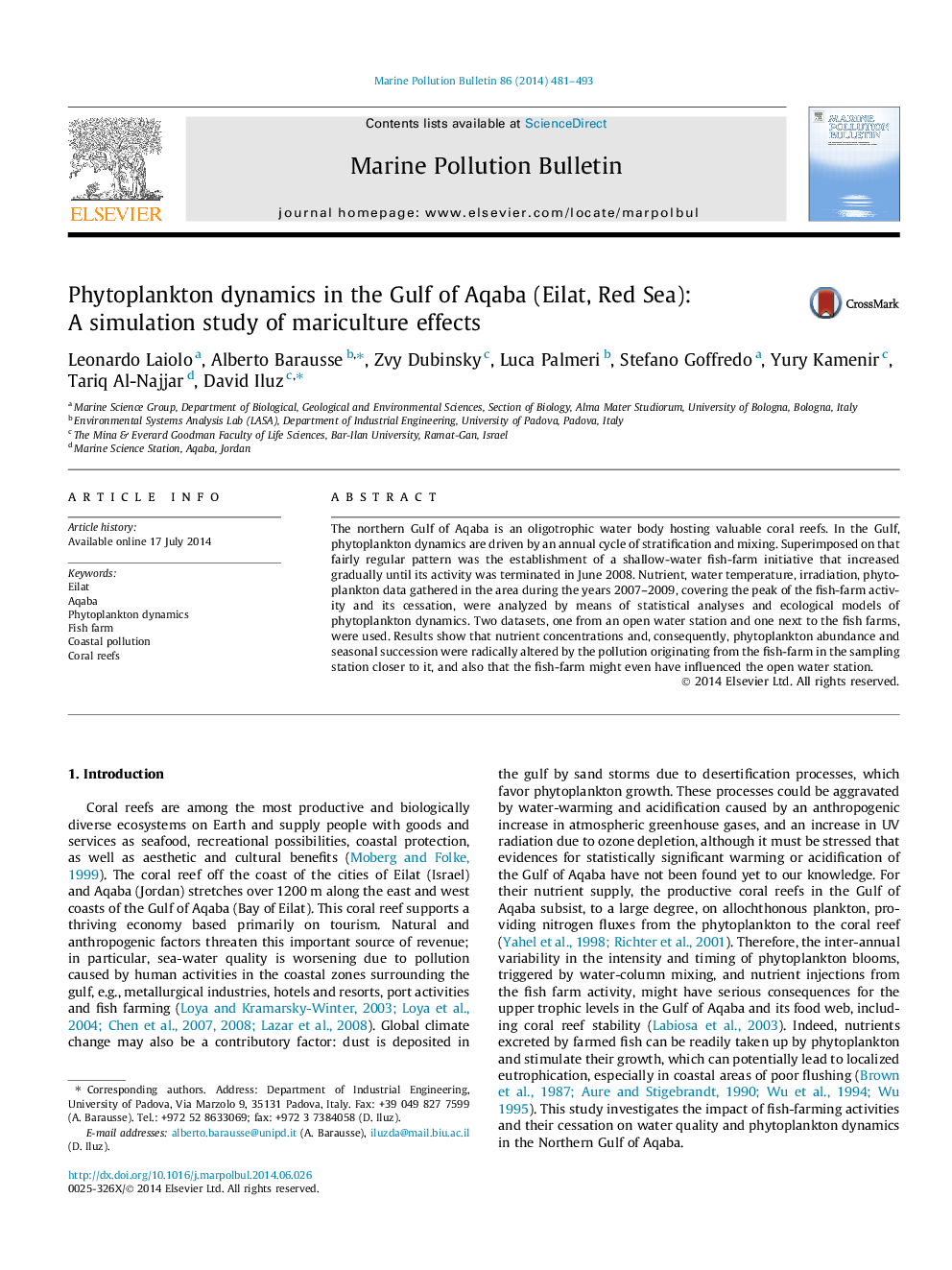| Article ID | Journal | Published Year | Pages | File Type |
|---|---|---|---|---|
| 6357804 | Marine Pollution Bulletin | 2014 | 13 Pages |
â¢Fish farms in the Gulf of Aqaba strongly affect phytoplankton levels.â¢Integrating statistics and ecological models help understand phytoplankton dynamics.â¢Phytoplankton dynamics are driven by mariculture activity and natural forces.â¢Mariculture can alter typical phytoplankton dynamics and seasonal succession.
The northern Gulf of Aqaba is an oligotrophic water body hosting valuable coral reefs. In the Gulf, phytoplankton dynamics are driven by an annual cycle of stratification and mixing. Superimposed on that fairly regular pattern was the establishment of a shallow-water fish-farm initiative that increased gradually until its activity was terminated in June 2008. Nutrient, water temperature, irradiation, phytoplankton data gathered in the area during the years 2007-2009, covering the peak of the fish-farm activity and its cessation, were analyzed by means of statistical analyses and ecological models of phytoplankton dynamics. Two datasets, one from an open water station and one next to the fish farms, were used. Results show that nutrient concentrations and, consequently, phytoplankton abundance and seasonal succession were radically altered by the pollution originating from the fish-farm in the sampling station closer to it, and also that the fish-farm might even have influenced the open water station.
